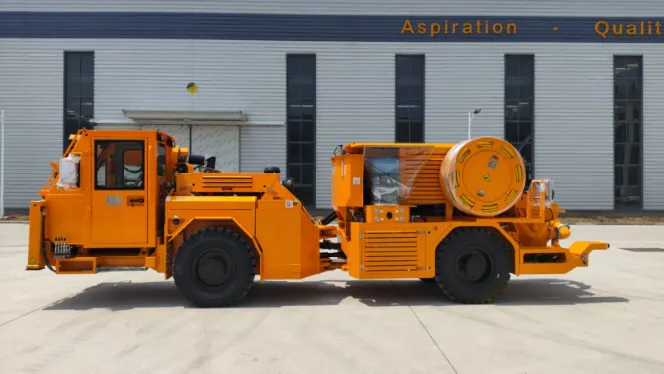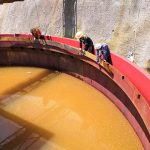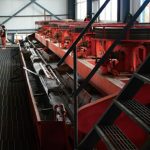How to Reduce Rebound Loss in Wet Shotcrete Applications

Introduction
Wet shotcrete gets used a lot in today’s underground mines and tunnels. It holds rock walls steady fast. That saves hours over old style lining ways. Yet one annoying issue pops up on most sites: rebound loss. High rebound throws away mix, drags the job longer, and leaves bumpy layers that hurt lasting support. Finding the sweet spot between pressure, mix stuff, and worker know how turns a sloppy spray into a clean one.
What Rebound Really Means in Wet Shotcrete
Rebound is when some sprayed concrete bounces off the wall instead of clinging. A little rebound stays normal, say 5 to 10 percent, but bigger amounts mean cash and minutes end up on the ground. The hard part? No single cause. It comes from gear setup, worker moves, and mix design together. Down in tight, dim spaces, tiny details count extra. A touch too much pressure or a bad angle can double the bounce rate. It looks like dust clouds, but it’s paid for mix wasted after hauling and pumping deep underground.
Why Rebound Happens
Nozzle Control Problems
Hold the nozzle too far, too near, or at a flat angle, and the mix lacks proper punch. Keep it steady around one to one and a half meters for wet spraying. Some workers find their own beat, but that beat must fit the gear’s push. Quick jerks or shaky sweeps often fling bits before they stick.
Issues with the Mix
The mix itself shifts things big time. Too dry, and it won’t grab. Too soggy, and it droops. Big chunks bounce easier. The best spot changes by job: rock kind, heat, even accelerator brand.
Air and Flow Rate Mismatch
Extra air blasts the mix away instead of packing it. Too little air, and the spray stays loose. Matching them isn’t guessing; it needs tuning and pump know how.
Operator Skill
Years on the job matter. Workers who sprayed on varied rocks usually sense when the mix “feels” right. That hands on cue, sound of the hit, look of the splat, takes time to learn.

Practical Ways to Cut Down on Rebound
Fine Tune the Mix
Pick smooth graded small rocks and steady wetness. Get cement to accelerator balance spot on. Fibers help, but dose them light; overload can bump rebound. Test a tiny batch first. It avoids headaches later.
Better Nozzle Technique
Aim the nozzle straight at the wall, near 90 degrees when you can. Don’t sweep side to side too quick. Overlap passes a bit. Layers build even. This drops rebound and packs a tougher skin.
Calibrate Air and Pump Settings
Proper air to mix match can slash rebound by up to 20 percent. Some crews use gauges and meters; others trust gut feel. Either way, gear must shift fast. Makers like Dali, famous for sharp control in underground mining machines, ease tweaks. Their units let workers lock steady spray settings and keep flow even.
Routine Equipment Checks
Hoses, nozzles, valves get hammered below ground. Tiny clogs or worn rings cause jerky spray, uneven coats, more bounce. Easy moves, check hose strength, scrub gunk, oil joints, keep things humming. A quick look before each shift often saves hours.
How Modern Technology Reduces Rebound
Automated Boom Systems
Robots now handle some spraying. Instead of just hand nozzles, new rigs use boom arms. They hold fixed angle and gap to the wall. Concrete lands with same force every time. Bounce drops a bunch.
Smart Spray Monitoring
Current shotcrete rigs pack digital watchers that tweak flow on the fly. Sensors catch pressure, depth, pattern, and fix wobbles auto style. Newest Dali builds have feedback loops that steady speed and stop extra spray. It saves stuff and gives slicker finish that grips longer.
Managing the Worksite and Operator Training
Top gear flops in bad spots. Bright lights, tidy floors, good air flow all trim rebound. Wet shotcrete needs clear sight; if the worker can’t spot wall texture, aim suffers quick. Keep training steady. Show nozzle hands how to read the rock, catch sag early, shift spray path. It cuts waste. Some mines run short weekly brush ups. Those chats uncover little slips, like stiff hose grip or skipped pressure checks, that add up big. A few bosses jot mix ratios and site notes per job. Not fancy, but those logs speed fixes next round under same setup.
Conclusion
Cutting rebound isn’t one magic trick. It’s lots of tiny tweaks, mix fiddles, calmer hands, clever rigs, that stack to smoother work. As underground digs push toward auto and cleaner runs, builders like Dali craft gear so crews stress less over bounce and more on solid, even linings. Bottom line: less rebound equals safer holes, quicker digs, cheaper tabs all around.
FAQ
Q1: What is an acceptable rebound rate in wet shotcrete?
Typically, a rate between 5% and 10% is considered normal. Anything above 15% usually indicates mix or equipment issues.
Q2: Does using fibers increase rebound?
It can if the fibers are too long or added unevenly. Short, well dispersed fibers usually improve strength without adding much rebound.
Q3: What’s the biggest factor in reducing rebound loss?
Operator control is often the deciding factor. Even with perfect equipment, poor technique can waste a lot of material.
Q4: Can rebound material be reused?
No. Rebound material should never be remixed or reused. It has already lost cement paste and adhesion strength.
Q5: Are electric sprayers better than diesel ones for rebound control?
Electric models provide steadier pump performance and smoother spray control, which can slightly reduce rebound. They also improve air quality in confined underground spaces.
About Us
Qixia Dali Mining Machinery Co., Ltd was established in 1998, located in Yantai City.
The company is mainly engaged in the design, development, production, installation and training of underground mine equipment and ore processing equipment, spare parts supply and sales.
MoreContact Us
- Xinbang Rd, Private Economy Park, Qixia, Shandong Province, China
- +86 135 5307 3459
- ytdali@ytdali.com
 +86 13553073459
+86 13553073459
+86 13553073459
+86 13553073459








